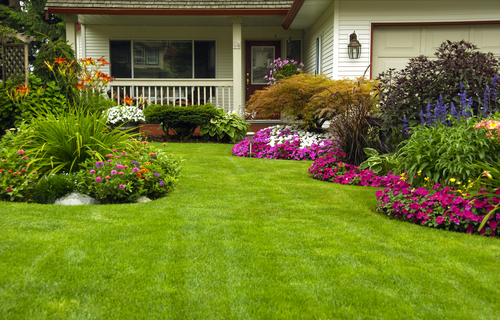Archive for Lawn Care
Spring Landscaping Ideas For The Perfect Garden
Landscaping during spring can give you a luxurious and glamorous looking garden. Spring is classified as one of four temporal seasons experienced here on our planet which occurs just after the winter and just before the summer. When most people refer to spring or ‘springtime’, to them it becomes synonymous with ideas of rebirth, rejuvenation, renewal, resurrection and regrowth.
Nevertheless due to the cold conditions brought on by the winter season it is highly likely that most plants, trees and shrubs will suffer substantial damage during the early part of the year. If you have a garden in and around your surrounding property protecting your plants from any damage or destruction should always be a major concern.
Landscaping Your Property During Spring
Since the springtime is seen as a time of rebirth and regrowth there are some additional tips that gardeners can employ to ensure that they maintain a safe and nurturing environment throughout their gardens.
Due to the harsh, cold, conditions of winter debris inevitably accumulates in grass and on lawns. Since lawns require no more than ½ an inch of buildup gardeners should rake away any excess debris from their grass or lawns. This also helps to control thatch on the lawn and offers an opportunity to look for matted areas. Raking will also allow the lawn a chance to breathe again.
Over time lawns can become compacted especially with a lot of traffic or excess debris so to help with this it is highly recommended that gardeners aerate lawns in order to avoid this. If you are not sure how to aerate your lawn you can always contact a professional landscaping service to come and assist with this.
Apart from some lawns having excess debris some can be found to have a lot of patches and bare areas. Overseeding is one method gardeners can utilize and refers to the applications of seeds to fill bare or patchy spaces in lawns . Although this alternative is generally recommended for the fall season it can be done in the spring if absolutely necessary.
If you have a sprinkler system the springtime would be the ideal time to inspect it for any damages and if any to perform repairs. However if all is well and no issues are detected this would also be the perfect time to have your system reactivated.
The spring is also a good time to apply some pre-emergent weed control to plants. This serves significantly control weeds in gardens as well as to act as a barrier against future weed seedlings. Gardeners should always keep in mind that this should be done before applying any organic fertilizers and to ensure effective weed control applications should be done on a continued basis in and through the summer.
Mulching is another effective system that gardeners ought to practice during spring as it offers several benefits to existing or emerging flowers, plants and trees in gardens. Placing mulch in flowerbeds and around plants and trees helps them retain moisture during the early spring months. It also helps to reduce the temperature of plant roots and insulates them in event of an unexpected freeze during the spring.
It is only natural that all gardeners, landscapers and farmers alike all want their gardens or crops to thrive and be protected so by utilizing a network of useful informative and effective tips available online or by hiring professional services those goals can ultimately be achieved. Contact us for more information.
How To Winterize Your Drip Irrigation System
Leaving a drip irrigation system in its natural state during the winter is a mistake. Be proactive and winterize your drip irrigation system with the methods outlined below. These winterization methods will safeguard your drip irrigation system, protecting your investment as well as your property. If you fail to properly winterize your drip irrigation system, the system’s valves, plastic fittings, poly pipe, filters, PVC pipe or layflat hoses might burst as a result of water freezing inside. Even the main water lines can be damaged if you fail to winterize. It will take an hour or less to winterize your system. Here is how to do it.
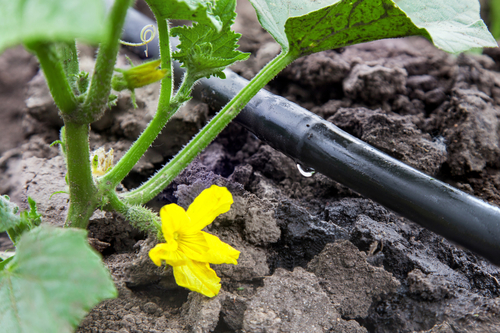
A Helpful Preventative Measure for Drip Irrigation Systems
One of the best ways to prevent freezing in your drip irrigation system is to install automatic drain valves. Position them at the lowest possible point within the system. Drain valves allow water within the line to drain out. Some experts also recommend running chlorine (2 PPM) into the system and flushing it out thoroughly for a comprehensive clean ahead of the winter.
The First Step
Begin by turning off the main water supply to the drip irrigation system. Do this the day before freezing weather arrives. Make sure that there is no water in the backflow device, filter, valves, drip hose, sprinklers, pipe and pressure regulator. Run the controller/timer through its regular watering cycle. This allows each valve to open. Water pressure is relieved from the valves as well as the main line. Let the lines drain.
If the spring-loaded drain valves toward the system’s end are not properly installed, the main line might not fully drain. In some instances, the ground is not completely flat or the drain valve is positioned toward the bottom of the system. If you have any doubt as to whether the main line is drained, make use of air pressure to fully flush out the system.
Drip Tubing/Micro Tubing
Start out by disconnecting the drip tubing with the filter assembly’s swivel adapter. Wrap this piece to the filter assembly so grime doesn’t reach the drip tubing. If your drip tubing is above ground, open each end to permit the draining of water. Lift the hose a couple feet at a time so water can drain out. Once the water drains, close the drip tubing ends.
Irrigation Valve Assemblies
If your system makes use of AC valves with a pressure regulator and filter or battery operated controllers, consider storing them inside a warm area during the cold months of the year. If you can easily remove the full assembly from the pipe, you can store this assembly unit all the way from the pressure regulator to the controller indoors for the winter. If separating the valve assembly or filter assembly is not feasible, loosen or remove the valve bonnet to ensure the water from the upper portion of the diaphragm and filter cap can drain.
How to Proceed Through the Duration of the Winter
Leave the system in the “off” position and fully drained throughout the duration of the winter. If you decide to water your plants, yard or other items on your property, use your hose. In most instances, there is ample moisture within the ground to sustain your greenery until spring.
We’re Here to Help With Everything Irrigation-Related
If you have any questions about how to winterize your drip irrigation system, reach out to our landscape maintenance company. We specialize in irrigation and water saving landscape design. Put your faith in our irrigation experts and we will improve the beauty, integrity and utility of your property. Contact us the experts for more information.
Winter Plants – Part 1
Nature provides numerous varieties of winter plants that flourish in cold temperatures. There are winter plants that will flourish even in snowfall and there are others that can mirror their vibrant colors from the icicles hanging from your home.
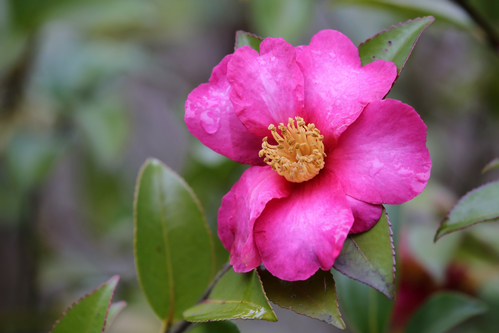
Winter Plants For A Breath Taking Scenery
One of the well-liked winter plants is the Camellia. This evergreen flourish from fall to early spring. With its brightly colored rose like flowers this plant provides a breathtaking difference to a sombre winter scenery. Camellia should be sowed in an area that have some sun but not too much
The winter-berry which is related to the holly and loses its leaves in fall is a great plant to have this time of year. You and your loved ones can enjoy the vibrant red berries that come into their own. The berries attract the birds during this time which is a sight to see and the birds will be happy for your blessings as well. You must plant the seeds during the fall in a small frame, then you can transplant them to fertile damp soil in the spring. However it is a slow growing winter plant, with its germination taking about 2 to 3 years.
Paper Maple has ringlets of copper colored bark flaking off all over and this constructs a pleasurable image both on the plant and while the leaves lay on the ground in all their splendor. During fall the green leaves change into a fascinating cinnamon shade and the plant grows in sunlight perfectly.
Red Twig Dogwood is an old-time golden boy as the color of the plant is sustained all year round. The boldness of the plant’s color relies on the sunlight it obtains. This is another incredible addition to consider in your garden during winter.
Firethorn is lasting and it has an appealing view all year. It has little bunches of glistening white flowers in spring and vibrant shiny green leaves the rest of the year. The little pea like berries can be either orange or yellow in color and these can survive until long after fall is over. The seeds should be sowed in the fall in a cold frame then transplanted to properly drained fertile earth in the spring.
If you want the best in lawn maintenance and advice contact us as DK landscaping. Our team of experts will help you give your garden the nutrients and the proper care it needs to survive and remain lush.
Winter Gardening: Growing Vegetables
Though snow may lie deep in drifts outside your window, this is the ideal time to get started with this year’s winter gardening program. There are many garden tasks that can be done now, while there is ample time to plan, research, and begin gathering materials. Some gardeners consider these winter chores to be the most enjoyable parts of gardening. Tasks can be accomplished comfortably from your armchair as the garden takes shape in your imagination, where it is always lush, abundant, and of course free of weeds.
Winter Gardening Advice
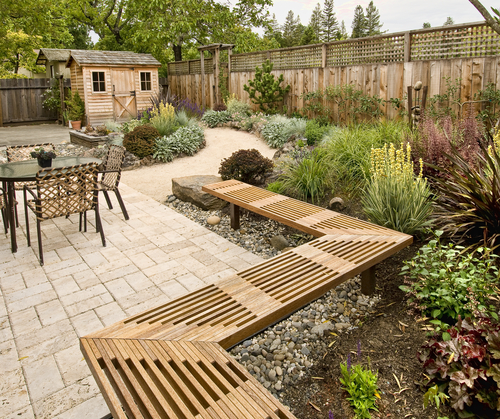
In midwinter, before the growing season gets underway you have time to organize yourself so you can accomplish everything you need to do from now until your garden is planted. This is the time to make rough plans which can be refined and modified as you go along. So while the birds twitter around their feeders and the forecast is for more snow, grab a stack of seed catalogs, some paper, and a pencil, and settle into a comfortable chair and plan your dream garden.
It is helpful at this early stage to make some key decisions about your garden. You need to compile the list of vegetables that you plan to grow. You must also decide which vegetables you will start from seed inside, which you’ll sow as seed directly into your garden, and which you’ll purchase as seedlings from a nursery. Additionally, you should list supplies you’ll need for cowing seedlings indoors, and begin to gather these items. It is also helpful to start composing a rough sketch of your garden layout. Finally, you should draw up a calendar of garden tasks to do to help you stay on schedule as the season progresses.
Start by thinking about which vegetables you’d like to grow this year. If you’ve had a vegetable garden before you should consider what grew well for you before and what failed. Certainly include any of your old favorites, those vegetables that are easy to grow and can be relied upon to produce abundantly. There may be new vegetables you’d like to try or new varieties of your old favorites that you would like to experiment with. Consider quantity too. Did you have as much as you wanted of everything last year? Was there something that you could not give away fast enough such as all those zucchinis? Perhaps there was something which you enjoyed eating but took up too much space?
If you haven’t grown vegetables before, a good way to start putting a list together is simply to consider what your family enjoys eating. You’ll want to think about vegetables that you’d like to provide fresh from your garden over the summer, as well as considering any vegetables that you’d like to can, freeze, or store for fall and winter eating. If this is your first vegetable garden it’s wise to start small. A small kitchen garden of ten or twenty square feet planted with a handful of vegetables and herbs will keep you fairly busy with garden tasks, supplement your family’s food, and provide you with good gardening experience to go forward.
Don’t forget to take your growing zone into consideration when choosing vegetables to grow. If you are not sure which zone you live in, you can readily find out in almost any gardening book or online. Do some research on gardening in your region to find out how long your growing season is, when planting time starts, and what types of vegetables do best where you live. Contact us for more information.
Winter Lawn Care Is Essential
Winter lawn care is no less as important as summer lawn care and maintenance. Your winter lawn care to-do list wouldn’t include activities such as trimming, weeding and watering however, care is important if you want your lawn to maintain its healthiness during the upcoming months. Depending on the location of your home you will have to determine the best plants to grow and maintenance methods to use in order to achieve this. If your lawn has weeds to spot-treat you can comply with these winter lawn care techniques.
Winter Lawn Care Techniques
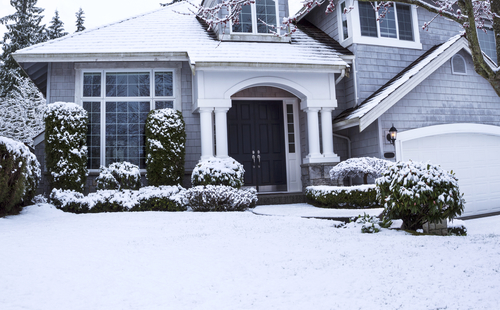
- Firstly, it is important to continue trimming your lawn even during the winter season. Note however, that there are several winter weeds that can’t endure frequent trimming and can die.
- Place a bag attachment onto your mower when trimming in order to capture seeds and prevent germination. In addition consider administering pre-emergent herbicide in the fall.
- Stop walking on your frozen lawn! Continuous walking or driving over a frozen lawn can kill its turfgrass crowns, which can create spring bare spots.
- If you can’t get all the autumn leaves eliminated before snowfall then not to worry as there is a solution for this. If the soil is damp, level it out carefully, as grass can pull up effortlessly. If you leave leaves on the grass during winter it can kill turf crowns. Moreover, they can lead to snow mold which can devastate your entire lawn.
Other Important Facts
Beware of vole trails that can be present in your lawn after snow fall. These mouse-like small creatures can be in both rural and suburban lawns. An abundant covering of snow on your lawn supply voles with the cover needed to devour grass roots in open lawn. this helps them to remain hidden from predators. As the snow liquefies their superficial runways become visible along the lawn veneer. The runways look like a tunnel without a top and soon as the snow softens you should trim your grass to prevent these critters from inhabiting your lawn.
If your lawn is wholesome you can leave out the grass seed. Another way to tackle the intrusion of voles is to obtain an outdoor cat. Contact us for more information and to inquire about our lawn care services.
Fall Garden Care
Fall is coming, and you should consider these useful tips as part of your garden care regime. After a flourishing summer of fighting weeds take pleasure in promoting a wholesome garden. This is truly a great time to entertain your family and friends in your backyard. By adhering to these easy fall garden care methods, you can ensure that it’s ready to be even more charming next spring.
Fall Garden Tips – Here’s What To Do
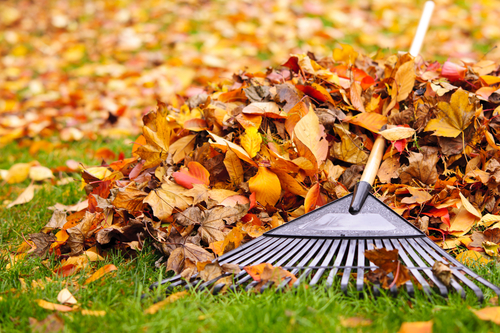
By the fall season, you should already be victorious in eradicating the weeds on your lawn. You should deal with any hold-outs before the leaves and snow make it too complex for you to handle. As it can be more difficult to handle the weeds. In addition, weeds can be extremely vigorous and can take over in the fall season when your lawn is less lively.
You should ensure that your lawn has an in-depth raking before snow falls. As time goes by, the leaves will begin to decay, depleting moisture out of the soil and encouraging a heartening dwelling for insects that may be damaging to your lawn. In addition, the plentiful layer of decomposed leaves may also leave behind dead spots in your lawn in the spring. Permitting weeds to rapidly move in and take over.
Over time, the soil of your lawn becomes flattened, decreasing the air pockets that permit nutrients and water to nourish the base of the roots. To fight this, ensure that you have your lawn aerated on a yearly basis. The best time to do this would be in the fall season. As it gives your lawn an opportunity to obtain the nutrients and water required for long term sustainability.
As your lawn matures it gets fatigued and the reproduction of your lawn decreases. Homeowners never want to see their lawns look unhealthy. It is suggested that your cover your entire lawn with grass seed before snow begins to fall. This will promote new lawn to start growing that will fill in the ailing areas. Consequently, next spring will have a winsome lawn outside.
There is an exceptional fall fertilizer that will assist your lawn with all the nutrients required to be wholesome in the fall season. This will encourage them to back even stronger in the spring season. It is better to fertilize early in the fall season to have your lawn charming and healthy in the autumn. Contact us and take pride in having a lawn that is luxurious.
How Irrigation Can Improve Your Lawn, Garden and Curb Appeal
The reasons that homeowners and businesses have irrigation systems installed are easy to understand. They’re trying to eke out more bang for their buck by going with irrigation advancements like micro irrigation, drip irrigation and spray tanks.
Irrigation is simply the best way to ensure that your home garden and lawn care needs are being met without having to worry about underwatering or overwatering.
Because irrigation and home sprinkler systems can be automated, you don’t need to fuss about achieving the best results possible.
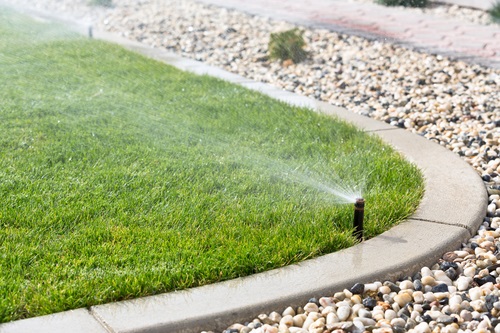
Irrigation Benefits Your Entire Property
You can even automate your system to behave differently in your garden versus your lawn, and you can also change up your watering cycles based on seasonal changes or plant growth.
Drip irrigation systems can also be extended to reach places that are just growing in or ones that didn’t exist when you originally installed the system. In terms of modifiability and adaptability to changing conditions, that’s pretty much the gold standard.
Especially when you’re dealing with a larger lawn in an arid region or a larger commercial property that needs virtually around-the-clock attention, an automated sprinkler system coupled perhaps with a drip irrigation setup can actually save you money long term. Homes benefit and conserving water, money and manpower is what it’s all about.
- Save Water, Conserve Manpower, Increase Curb Appeal
Drip irrigation is especially advantageous to homeowners and businesses in arid regions of the country that seasonally experience droughts, water shortages and steeper water prices (e.g., states like California).
The way that drip irrigation works – allowing water to drip down to different plants and root zones via pipes, emitters and valves – can consistently deliver more water to the roots and increase yields….all while saving water.
At the same time that you’re saving 50% more water compared to regular sprinkler systems, you’re getting better coverage and you’ll naturally experience less weed growth.
All of this together could very well bolster your curb appeal or, if you’re running a business, bring in more customers: A professional first impression goes a long way.
Incorporating Irrigation Into Your Lawn Care Routine
Business owners reading this might be scratching their chins and wondering whether they really need an irrigation system or if they can get by with simply watering twice a week. First off, you should realize that simply watering might not be enough.
If you’re running a commercial property, then irrigation is but one piece of the puzzle when it comes to maintaining a professional image. Mowing, mulching, fertilization, aeration and leaf removal might all be part of the overall picture in terms of getting the most out of your property or maximizing the curb appeal of your home.
That said, irrigation is one of those foundational lawn care services that really gets at the heart of landscaping. Why? Because irrigation delivers water right to the root source and if plants, trees and lawns don’t have enough water and sunlight they’ll definitely under-perform.
- Easy (and Expandable) Installation
While soaker hoses and sprinkler hoses might be the easiest-to-install and most DIY form of drip irrigation around, even professionally installed drip irrigation systems are relatively simple to install and shouldn’t require any excavation at all.
Because residential and commercial irrigation systems frequently rely on tubing, you can work with a landscape maintenance company to home in on the best location for the system. You can even move the system around if your needs change or power up/down the system to fit seasonal changes.
Drip irrigation systems efficiently deliver water right to the root source and are ideal for cost-efficiently achieving the best lawn possible. Consult with us on how you can benefit.
6 Xeriscape Ideas
Xeriscape gardens are specially built to require little to no irrigation. Instead, they’re specially constructed to use minimal water, and conserve the natural water (like rainwater) that enters their system. The end result is an environmentally-friendly garden that’s still beautiful.
Because xeriscape involves such skill and knowledge, it can be tricky to know where to get started. But with these six xeriscape ideas, you’ll get a head start on planning your garden.
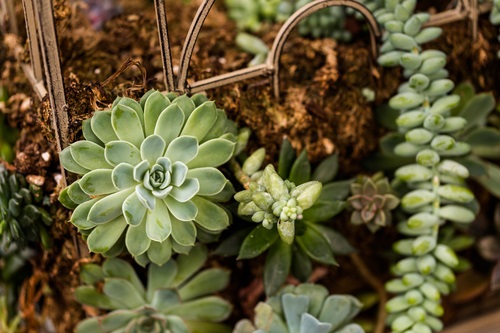
1. Think Beyond Cactus
Many people think xeriscape gardens are restricted to cactus and succulents. But most local plants are resistant to dry conditions in your area. Research native plants, or inquire with local gardening organizations, to find out what plants would flourish in your xeriscape garden.
2. Use Drip Irrigation
While many xeriscape gardens use no irrigation whatsoever, some use a form of irrigation called drip irrigation. Put small holes in a garden hose (or buy a hose specially perforated for this purpose), then lay it flat against the ground or near to it. Run this hose in the early morning or late evening, to minimize water loss due to heat.
The vast majority of the water through this slow drip system will get soaked up through the earth where it can nurture your plants, rather than getting lost to spray or evaporation. This is a good way to keep even drought-resistant plants through dangerous droughts, or to encourage your blooms to look their fullest during a dry season. To further maximize this method’s potential, place any plants that need more water close together, so they’re easier to water.
3. Try Perennials
Perennial flowers are more likely to be drought-resistant than annuals, and they’re lower maintenance, too. Try planting a group of perennial blooms close together to maximize their visual impact. For additional beauty, choose several perennials that will bloom at different times of year and plant them throughout your garden, to make sure you’ll always have something blooming.
4. Plan for Fall and Winter
Plants like Russian sage and many ornamental grasses dry out in the colder months. This is actually a positive: a well-planted standing will look like a dried bouquet. Add these to your xeriscape garden so there’s always something to draw the eye, no matter the season. You may even choose to avoid cutting back plants in colder months, to better take advantage of dried plants’ unusual shapes and appearances.
5. Fill Space with Rocks
Many xeriscape gardens gravitate toward gravel for open spaces. Gravel is great because it isn’t water-hungry like grass, and it holds moisture better than soil. But adding some beautiful rocks to cover space is a way to add texture and color to an area. Even just a small portion of rock garden adds character and variety to your xeriscape garden.
6. Play with Style
Not every xeriscape garden needs to look like a desert. With a little creativity and planning, xeriscape adapts well to any aesthetic or garden style. Don’t be afraid to think outside the box.
Xeriscape isn’t just environmentally friendly: it encourages creativity by imposing limits and forcing gardeners to think outside of comfortable tropes. Contact us and let us, plan and think creatively together. You’ll create a water-efficient space that’ll look its best in any season.
Use a Weed Eater and Get Rid of Pesky Shrubbery
If your property is saddled with unsightly shrubs that just keep getting in the way of the rest of your landscaping or even your walkways, the solution is our weed eater service. Shrubbery has a tendency to overgrow in every which way, causing all sorts of havoc. This is a common problem that can be cleared up by our weed maintenance team.
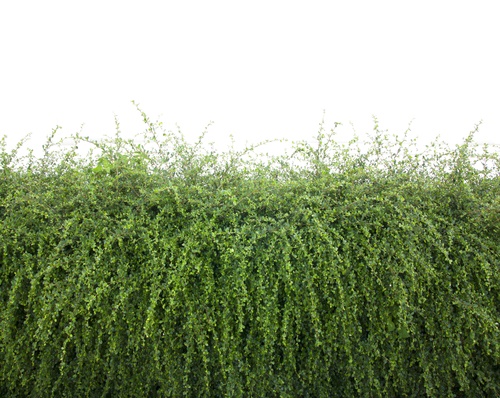
Do Yourself a Favor and Ally With the Weed Control Experts
Unruly shrubbery has the potential to ruin an otherwise beautiful yard. The weed control aficionados here at DK Landscaping know all the nuances about weed control products and weed control strategies. We will prevent wayward shrubs and weeds from overflowing onto surrounding components of your landscape. If you have any questions as to what the best way is to manage those pesky shrubs, do not hesitate to reach out to our experts. We know the ins and outs of weed control products as well as weed eating machines. Allying with our team has the potential to save you plenty of time, money and heartache.
Don’t Torture Yourself Attempting to Manage Shrubs by Hand
DK Landscaping has all the equipment that is necessary to get rid of those unruly shrubs once and for all. Too many homeowners make the mistake of trying to manage shrubs and weeds by hand. This is a waste of time and effort. You can trust our team to use our state of the art weed eaters to put an end to your shrub problem. It is a quite an easy solution compared to attempting to find a product that will keep those shrubs under control or using your hands to remedy the issue.
Our Weed Eater Equipment
DK Landscaping refuses to use anything but the highest quality metal blade edgers to trim shrubs and other aspects of customer lawns. This style of cut allows for superior precision and control to generate the cleanest possible cut. It is a stark contrast from our competitors who use string edgers that create wavy edges and ugly wide gaps. Such wavy edges and gaps look terrible and allow for conditions in which weeds and shrubs grow in all directions. You can rely on our shrubbery and weed experts to use our weed eaters with great care. Our team is well aware of the fact that these powerful machines move at speeds topping 4,000 revolutions per minute.
Shrub Beds are Quite Sensitive
There is absolutely no point in attempting a do it yourself (DIY) style shrub maintenance job in which you pluck shrubs/weeds out of the ground. Hand weeding actually leaves the roots intact so those annoying weeds and shrubs will keep on growing right back. Furthermore, using a low quality weed fabric will allow weeds to break through. Even attempting a DIY mulch job has the potential to exacerbate your shrub and weed problem. If you do not select the proper type of mulch, it will affect the soil’s warmth and consequently impact the growth rate of your shrubs.
DK Landscaping is Here to Help
You are not alone in your battle with these disorderly shrubs. When you ally with DK Landscaping to eliminate those pesky shrubs, you will no longer feel disappointed and annoyed when you look at your property’s landscaping. Our weed eaters will get right down to the core of the problem so you don’t have to invest one more second in shrub management. Reach out to DK Landscaping today to schedule a consultation and/or an appointment. We’ll discuss our services in-depth with you and provide a quote. Contact us today by dialing 707-280-3632.
About Watering Lawn After Mowing
Engaging in watering lawn? As the weather heats up, more people will be venturing out into their yards to mow, plant, trim, and generally get things spruced up. Mowing the lawn becomes an almost constant chore from the time the dandelions pop up in the spring until the leaves fall in the autumn. Whether you choose to mow your own lawn or hire experienced professionals, you may have some questions about watering your lawn after mowing.
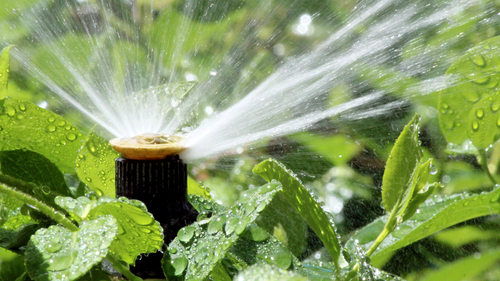
Setting a Schedule for Mowing
While mowing and watering are two separate chores which should both be scheduled, it’s important to leave room for flexibility for the days of drought and when it pours. The lawn needs mowing when the grass reaches a certain height and watering when the grass is dry. Those two events may or may not occur at the same time. Establishing a schedule to address these needs will help you make sure you aren’t wasting water or time. You should mow when grass reaches a height of about 3 to 4.5 inches. When it’s tall enough, trim it to about 2 to 3 inches. Depending on the season and type of grass, you may need to schedule mowing as often as every 5 days.
Setting a Schedule for Watering
Schedule your watering so that grass gets about 1.5 inches of water per week during the growing season. Time of day is also important to consider. Morning is an ideal time to water because it allows the grass to soak up the water before the heat of the day. Watering in the middle of the day wastes water because the sun speeds evaporation. In addition, watering too late in the day leaves insufficient time for the water to soak in before it cools off at night, potentially leading to fungal growth or other disease.
Knowing When to Water by the Color of Your Grass
Determining that grass needs water is a little tricky, but there are some things to look for. Grass that fades from bright green to a dull, bluish gray is probably thirsty. Also, look for signs of wilting, such as curling grass blades. Another trick is to look for footprints in the grass after you’ve been walking in the yard. Hydrated grass will spring back more than dried grass so, if you can see that you’ve left a trail, it’s time to water. One foolproof way to know if your grass needs a drink is to use a simple moisture meter, available at many garden stores. Or, utilize a rain gauge so that you know how much natural precipitation has fallen during the week.
A Pristine Lawn Takes Time and Attention
So, should you water after mowing? The simple answer is yes, but only if your grass needs the moisture. If you’ve had a rainy week and the grass isn’t showing footprints or other signs of dehydration, you can probably put off watering for a bit longer. If your lawn does need to be mowed and watered, make sure you schedule it for early in the day to avoid moisture evaporation and problems with disease. Don’t water your grass before mowing. Wet grass tends to clump together on the lawn which could suffocate the grass underneath or promote fungal growth. Also, it could clog up your mower.
Mowing is an essential aspect of home maintenance. A freshly-mowed lawn looks great, feels wonderful on bare feet, and helps keep invasive weeds in control. To handle all of your mowing needs, get in touch with the professionals at DK Landscaping today. You can trust us to keep your yard looking great for all seasons.


